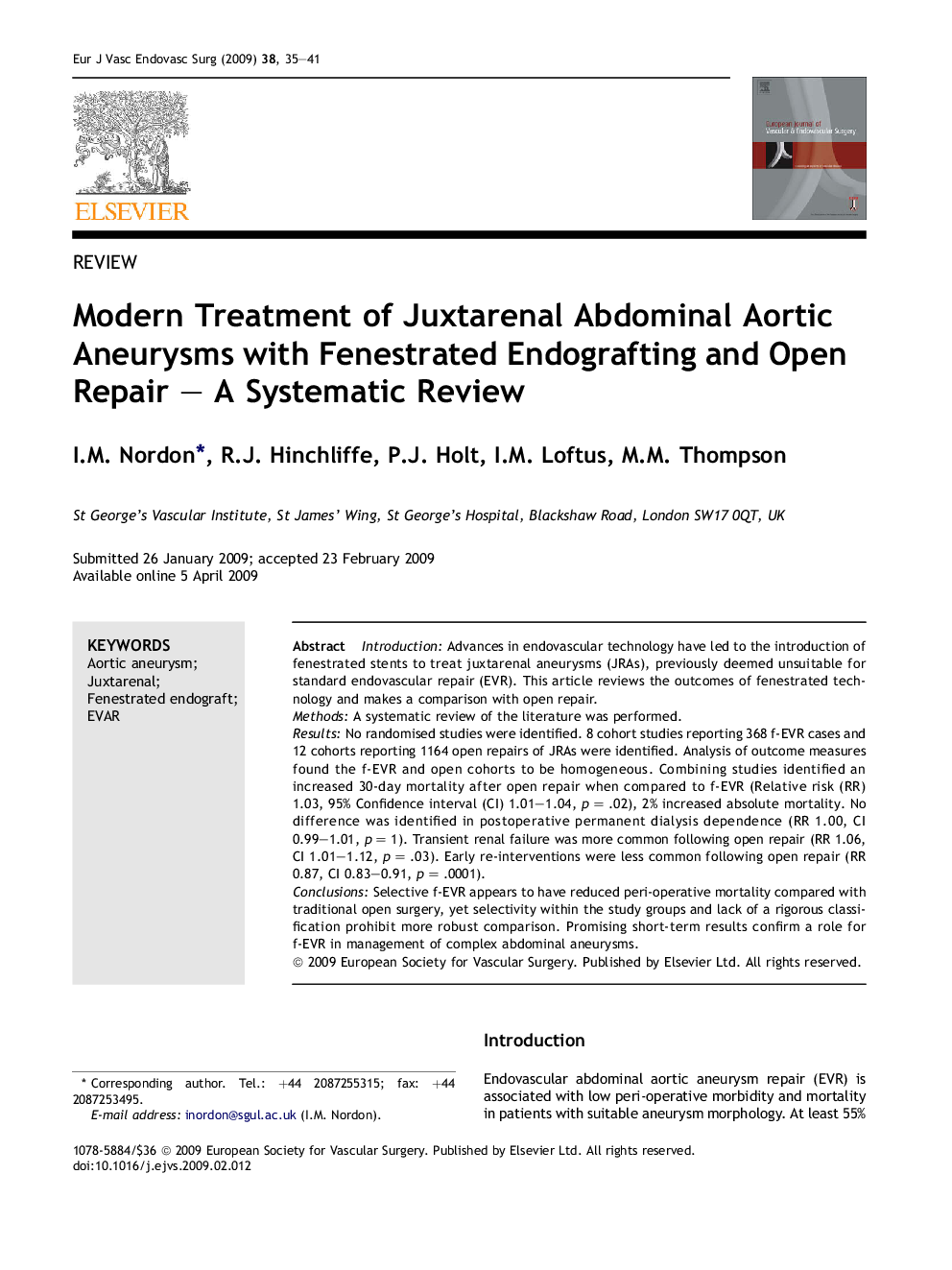| Article ID | Journal | Published Year | Pages | File Type |
|---|---|---|---|---|
| 2914458 | European Journal of Vascular and Endovascular Surgery | 2009 | 7 Pages |
IntroductionAdvances in endovascular technology have led to the introduction of fenestrated stents to treat juxtarenal aneurysms (JRAs), previously deemed unsuitable for standard endovascular repair (EVR). This article reviews the outcomes of fenestrated technology and makes a comparison with open repair.MethodsA systematic review of the literature was performed.ResultsNo randomised studies were identified. 8 cohort studies reporting 368 f-EVR cases and 12 cohorts reporting 1164 open repairs of JRAs were identified. Analysis of outcome measures found the f-EVR and open cohorts to be homogeneous. Combining studies identified an increased 30-day mortality after open repair when compared to f-EVR (Relative risk (RR) 1.03, 95% Confidence interval (CI) 1.01–1.04, p = .02), 2% increased absolute mortality. No difference was identified in postoperative permanent dialysis dependence (RR 1.00, CI 0.99–1.01, p = 1). Transient renal failure was more common following open repair (RR 1.06, CI 1.01–1.12, p = .03). Early re-interventions were less common following open repair (RR 0.87, CI 0.83–0.91, p = .0001).ConclusionsSelective f-EVR appears to have reduced peri-operative mortality compared with traditional open surgery, yet selectivity within the study groups and lack of a rigorous classification prohibit more robust comparison. Promising short-term results confirm a role for f-EVR in management of complex abdominal aneurysms.
